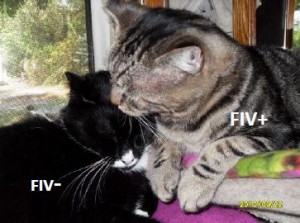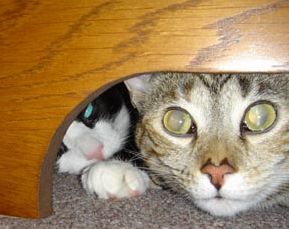Written by Laurie Goldstein, March 2012
The Fear Factor
 Imagine you’re three years old. You had a large family, and you loved playing with your brothers and sisters. But something happened, something tragic. You don’t know what happened. All of a sudden, you’re surrounded by strangers. You’re taken to a doctor, poked and prodded. You’re terrified. And instead of going home, you are put on a plane. You’ve never been on a plane before. You are no longer terrified, you are petrified. When you arrive in you-don’t-know-where, nothing is familiar. Nothing. Little do you know it, but you have just been adopted by a wonderful, loving, Chinese family. They take you home, and give you your own room. It is filled with new toys and a wonderful, comfortable bed. But you don’t understand that these are your new parents. You don’t understand that this is your new home. You don’t recognize any of the toys, and you do not understand they are toys. All you know is that everything looks different, everything sounds different, and everything smells different. The food tastes funny. You are literally frozen with fear.
Imagine you’re three years old. You had a large family, and you loved playing with your brothers and sisters. But something happened, something tragic. You don’t know what happened. All of a sudden, you’re surrounded by strangers. You’re taken to a doctor, poked and prodded. You’re terrified. And instead of going home, you are put on a plane. You’ve never been on a plane before. You are no longer terrified, you are petrified. When you arrive in you-don’t-know-where, nothing is familiar. Nothing. Little do you know it, but you have just been adopted by a wonderful, loving, Chinese family. They take you home, and give you your own room. It is filled with new toys and a wonderful, comfortable bed. But you don’t understand that these are your new parents. You don’t understand that this is your new home. You don’t recognize any of the toys, and you do not understand they are toys. All you know is that everything looks different, everything sounds different, and everything smells different. The food tastes funny. You are literally frozen with fear.
Your first day there: what do you want? Do you want your new mom to come in, expecting you to want to be held, hugged, and cuddled? Is it reasonable for your new parents to expect you to love and trust them right away? Or do you need space, time to adjust, time to understand what’s happened to you?
This is how your newly rescued feral kitty feels. Her entire world has been turned upside down. She is in foreign territory, she does not understand what is happening or why, and above all, she does not understand that she is not in danger.
So how do we “socialize” this terrified cat? Whether she is two months old or two years old*, it’s quite simple. We don’t. We completely change our mindset. If you’re adopting or fostering a feral cat, all that is required for your mutual happiness is her trust. The rest follows naturally. The age of your kitty will affect her timeline. But you must turn off your clock. Let her understanding of your love for her unfold at its natural pace.
The Vet Visit
Before being released into her safe room in your home, of course we assume that your feral rescue baby was trapped or crated, taken to a vet, and has been:
– Treated for parasites, external and internal (don’t bother with a fecal, assume they’ve got internal parasites).
– Checked (and treated) for any wounds or illness.
– Vaccinated.
– Spayed or neutered (it will take a few days after sterilization for that strong urine smell to mitigate, but to stop spraying (territory marking) before it starts, it’s best to sterilize as soon as possible. Kittens as young as eight weeks if weighing 2 pounds can safely be spayed or neutered.
– Tested for FeLV and FIV if the kitty is older than six months (until that age if kitty’s mom was FeLV or FIV positive, they can carry the antibodies the test checks without being infected, registering a false positive). Please be aware that with any age cat, the SNAP test administered in the vet’s office has indicated false positives up to 32% of the time. So if kitty tests positive, no decisions about kitty’s fate should be based off of the SNAP test. They are more expensive, but definitive, confirmatory tests do exist.
– Checked for dental health. Older feral cats often have serious dental problems. Whether they need to be treated now or at some point in the future is something for you and the vet to decide together.

If your kitty tests positive for FeLV or FIV, the effective quarantine they require for developing trust of humans will give you time to decide on your plan of action. It is important to note, FIV+ kitties can safely live indoors fully integrated with your existing fur family with no threat to their health if introductions are made properly.
A Foundation of Trust: Create an environment that feels safe
Cats by nature are territorial. We can make this work to our advantage. When bringing any new cat into your home, you need to give them a small piece of it to make their own. This is the “safe room,” and feral kittens or cats above all else, need this confined, defined space.
 Within that room, they will need “safe spaces.” As many of us have discovered, under the bed or chest in that guest room is a favorite spot. Unfortunately, neither place is a good kitty safe space. Whether your feral kitty safe room is a large bathroom, the home office, or your guest bedroom, it is important to deny access to areas you will not be able to easily reach. Best are places where kitty feels safe, can watch everything you do, and that you can access should the need arise. Crates with doors secured in an open position (or removed); a table draped with a cloth that reaches just a few inches above the floor; a box or two turned on their sides with the top flap left to hang down; or kitty tents and cubes all make wonderful safe spaces for the newest member of your family.
Within that room, they will need “safe spaces.” As many of us have discovered, under the bed or chest in that guest room is a favorite spot. Unfortunately, neither place is a good kitty safe space. Whether your feral kitty safe room is a large bathroom, the home office, or your guest bedroom, it is important to deny access to areas you will not be able to easily reach. Best are places where kitty feels safe, can watch everything you do, and that you can access should the need arise. Crates with doors secured in an open position (or removed); a table draped with a cloth that reaches just a few inches above the floor; a box or two turned on their sides with the top flap left to hang down; or kitty tents and cubes all make wonderful safe spaces for the newest member of your family.
Setting up the safe room
Lighting. If your kitty is desperately seeking escape, you may need to pull the shade. If not, open curtains and a comfy seat in front of a window will help provide entertainment. But aim for soft lighting. At night, make sure to provide a night light.
Litter boxes. Feral cats are not used to eliminating in the same place. It is always best to provide two litter boxes if the space allows it. Using Cat Attract litter will help your feral kitty identify the litter box as the place to go to the bathroom. Even better, buy some potting soil to put a layer (of clean, parasite-free soil) over the top of the litter. Many recommend using clay litter at first. We’ve found the soil-over-the-clumping-litter transition to work quite smoothly. Kitty may pee or poop outside the box when they first eliminate in your home. Don’t throw it away. Put poop in one box; soak up what pee you can before properly cleaning the spot and (lightly) bury the pee-soaked paper towel in the other. With the scents in the proper places, feral kitties, typically very fastidious about their bathroom behavior, will almost always pick up on this cue.
Create a calm environment. While many cats do find some stress relief from the use of a spray or plug-in product called Feliway (synthetic hormones that mimic the “friendly” scent markers in cats’ cheeks), feral cats almost universally find harp music very soothing. There are CDs marketed specifically for calming pets, but any harp music will do. Calm, string-oriented classical music will also help. The classical radio station will do in a pinch.
Eliminate escape routes and dangers. “Cat proofing” is a must. Her fear may drive her to seek escape, and she may be so scared when first released she literally tries to climb the walls. Ensure there is nothing breakable on tables, desks, dressers or shelves. Ensure she cannot access heating or cooling ducts or vents. Search your ceiling, walls, and get down on the floor. Cats’ shoulder blades are not attached to the main skeleton, so if her head can fit, she can fit.
Scratching. Cats need to scratch! Make sure to provide several enticing scratching options. A sturdy post and a horizontal cardboard scratcher are excellent options. It’s best to provide both.
Height. Some cats feel safer when “up.” This is especially true of deaf cats. If you can provide a cat tree in front of a window, this is a terrific option. If not, a tall dresser, book shelf, or empty wall shelf will all provide a nice option for your kitty. Even better if whatever you provide has room for a cat cube or box on its side.
The Building Blocks of Trust
Release. Her safe room is set up. You arrive home from the vet and wonder, “what next?” There is food and water out for her, everything she needs is ready. Talk to her. Tell her what you are going to do. You are going to set down the trap or crate, open it, and leave the room to let her hide. For young kitties, you may only want to leave them for an hour or two. For older feral rescues, it’s best to give them a full day (up to 24 hours) before starting the daily routines.
Routine. Nothing builds trust more quickly than the daily routine of caring for your scared kitty. Do everything you can at the same time each day, but split up the visits if possible so she becomes accustomed to your non-threatening presence. Scoop litter boxes at the same times every day. Provide food at the same times every day. Clean and refill the water dish at the same time every day.
Respect. Respect her space. Knock lightly on the door; open it an inch and softly tell her that you are going to enter. Talk to her gently as you take care of her needs; tell her what you are doing and why. Tell her about your day. Tell her how wonderful her life is going to be! Do not try to interact with her, let her set the pace. Respect her space and her programming. In a cat’s world, looking directly into another’s eyes is a sign of aggression. Our tame and social pets understand our adoring gaze; your new feral family member does not. If you seek her out with your eyes, look at her forehead or over the top of her head, don’t send the wrong signal. Eyes are very strong communicators, and to a cat, closed eyes are a sign of trust. Long, slow blinks, or simply “looking” at her with your eyes closed all communicate that you mean her no harm. It may take some time, but your heart will leap the day she slowly blinks back at you.
Rations. Food is your friend! Her life on the street wasn’t easy, and having regular meals and knowing that YOU provide them will take you far in earning her trust. As cats have very sensitive noses, take this one step further. Get a several t-shirts really good and sweaty. Put one under the food you serve her. On other occasions, when you leave the room, leave a few treats behind on another sweaty t-shirt. This will help her quickly associate your scent with wonderful things.
Reading. To earn the trust of your feral, you need to stop being such a big scary monster. Grab a good book and make yourself comfy on the floor (preferably with your side turned to her) and read out loud. Down at her level, she can easily watch you. Simply being there and not trying to interact with her will help her understand you mean her no harm.
Reaching. You ache to pet her, to let her feel your love! Please don’t, not at first. She doesn’t know (yet) how much she’s going to love being loved. When she’s more confident, she will approach you. Tips to try as she progresses: Put one hand down on the floor while you hold the book you’re reading with the other. Set treats down between your fingers on the floor. Wet baby food (meat only) on a spoon may draw her to you. Let her eat it without trying to touch her – this will earn you many trust points! When you do feel she’s ready for a “reach,” do it slowly, with your hand in a fist. This shape is similar to a cat’s head, and is far less threatening than an open hand.
Resting. There is nothing less threatening than a sleeping human. If her safe room is the guest bedroom, spend the night in there. Take a nap. If you feel her jump on the bed, try not to react. Pretend to be asleep, and let her investigate.
Recreation. Older feral kitties do not know what toys are. Young kittens find them almost irresistible. Interactive wand toys are wonderful. It’s always best to start small. Simply lay the toy down on the floor. Hold the wand in your hand, and make the toy wiggle very slowly. If kitty seems interested, keep going. If she looks afraid, just do this frequently, and it will pique her prey/play instinct. Never leave wand toys in the room. For other play things, a furry mouse that rattles, a pine cone or some acorns are good to leave out. Expect to find them in different places each morning than where you left them the night before.
What to Expect
Expect a journey. This is a process, and the little steps are to be celebrated! Your six week old rescue kitten may be purring in your lap within a few days. Your eight week old feral kitty may be scared for weeks. Your two year old kitty may come to trust you inside of two months: it may take two years. With these special kitties, the very best thing you can do for them is not to expect anything at all. Let them guide the pace. Let them show you who they are and what they want. Accept them on their terms, and they certainly will do the same for you. And when that foundation of trust is firmly in place, expect a bond of love like no other. ♥
*Please do not force a feral cat older than three years to live inside. There are certainly many instances where older kitties, especially if they’re ill, are ready for the change. But most older feral cats will never adapt, and it is not an act of love to force these kitties to “learn” to live inside.
If you enjoyed this article or found it informative, please “Like” it, “Tweet” it, or share it using any of the buttons below. And don’t forget to check out our FB page, join the discussions in our awesome FB group and follow us on Twitter!
Created 03/18/12; Updated 08/11/14

